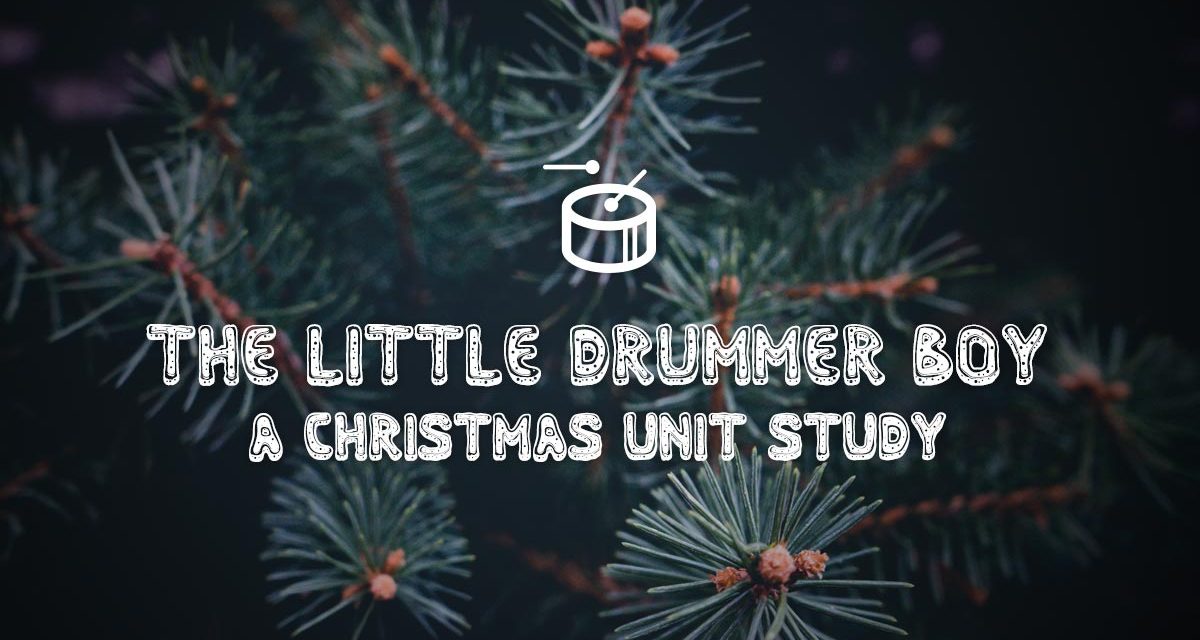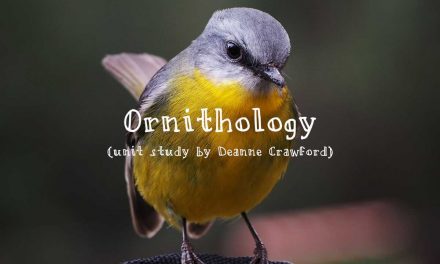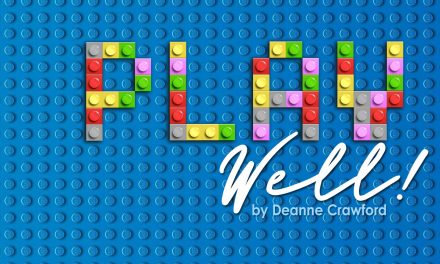As a family who loves to celebrate the Christmas season, we were excited when the sounds of Christmas filled the air. Whether meandering through the grocery story or hearing children sing loudly (and joyfully!) through their lessons, the songs of Christmas excite our senses in ways no other music does. Welcome to our December Unit Study on the Little Drummer Boy! I invite you and your family to set aside time to savor facets of this simple song. Before we begin, I want to mention we will be listening to several musical pieces. As a parent, you may find the Classics for Kids Guided Listening article beneficial for leading discussions with your children.
Begin your time together with listening to the awe-inspiring Pentatonix version of the Little Drummer Boy. As you listen, have your children pay close attention to the catchy, although repetitive, “Pa Rum Pum Pum Pum” and the succinct story. Ask your children, “Who is the drummer boy going to see?” and “What gift could he bring to the newborn King?” Invite children to create their own version of the Little Drummer Boy incorporating their answers as lyrics. Transcribe the song for your little ones and save it for copy work. If you have preschoolers or early elementary children, this is a perfect song to do rhyming word play, an important early literacy skill. Rhyme together the Pa or the Pum/Rum. Older children may find this word play enjoyable as well, but encourage them to find multi-syllable words with the pum/rum sound. While seemingly silly, word association games are valuable for developing a variety of language skills.
With an undocumented history, it has been suggested that the original Little Drummer Boy traces back to a Czech lullaby, called Hajej Nynjej. Here is a short clip of the lullaby. Ask your children to listen and compare it to the song they know and love. Do they hear any similarities? If not, they are in good company, as many historians do not feel the melody resembles our beloved Little Drummer Boy. You may be interested to learn that the artist, Katherine K Davis, affirmed in published interviews that the play-drums-for-Jesus idea came from “Pat-a-Pan,” a 17th Century French carol. Prior to writing the Little Drummer Boy in 1941, Ms. Davis taught music theory and wrote over 600 compositions including operas, choruses, children’s operettas, cantatas, and piano/organ pieces. Take time with your children to learn about the differences in composition with your children with The Guide to Top 10 Classical Music Forms.
Just for fun, ask your children to guess how many versions of the Little Drummer Boy have been recorded. Since the 1950s, there have been over 200 versions in 7 languages. Representing nearly all musical genres, a sampling includes: Bing Crosby (15 years later Bing Crosby recorded with David Bowie); the Canadian Brass; The Three Tenors; and an African Tribal Version featuring Alex Boye’. One of the most notable versions is the Trapp Family Singers, Carol of the Drum. While titled differently, the similarities between the music and lyrics lead most historians to believe it to be the original recording. Time permitting, listen to Carol of the Drum and compare to the Little Drummer Boy. You may be familiar with the Trapp Family Singers through the classic movie, The Sound of Music. Rabbit Trail: as with many biographical movies, this movie changes many aspects of the Von Trapp family including the full impact of the Nazi regime and their U.S. Citizenship struggles. If you would like to learn more of the story behind the movie, the National Archives Real Story of the Von Trapp Family and The Story of the Trapp Family Singers are both excellent resources.
At this point in our study, you have listened to the lyrics of the Little Drummer Boy numerous times and one theme stands out: giving from the heart and not abundance. Review the simple lyrics with your children. Ask them: Who in this song notably gives to another? What did he share? Why did he feel compelled to share his gift? How did he share his gift? Together, using a dictionary of your choice, define the words give or giving as well as the word generous and read the following Bible passages together: Acts 4:32-37 and Romans 12:6-8. Based on these readings, ask your children to explain what giving looks like. As a family, seek opportunities to give to others. This may include the Salvation Army Bell ringing; Operation Christmas Child or cleaning out a toy box to donate gently used items.
Science topics flow naturally with our study. Introduce younger children to the sense of hearing and their ears. KidsHealth.org and CK12’s Hearing and the Ear for Middle school provide easy to use lessons for students. Follow up with an Ear Labeling Worksheet or make a Model Eardrum. This is a perfect time to revisit listening to the varied versions of the Little Drummer Boy. Explain the pathway sound takes from outer ear to brain and comprehension. Older children may appreciate the challenge of understanding the Physics of Sound. Finally, spend some time understanding the Science of Music at Exploratorium.
As we conclude our study, you may want to include a brief look at the Little Drummer Boy television special. Originally released in 1968, this stop-motion cartoon utilized one of the first special effect techniques ever invented. Creating with stop motion is a simple technique that is rarely used today since the advent of computer animation. One filmmaker successfully used stop-motion into the mid 1990s and early 2000s. Checkout the Museum of Modern Art article on Tim Burton and his stop motion successes! You can also learn more about stop motion through the Kids Think Design website. Invite children to create through their own stop motion animation with Lego® bricks and step by step instructions available here. Additionally, you may wish to watch as a family, the Miracle Maker, a stop motion animation based on the life of Christ.
Thank you for joining me this month in our Christmas unit study. If you enjoyed this year’s Christmas Carol and missed last year’s study on I Heard the Bells on Christmas Day, I invite you to check it out here.





